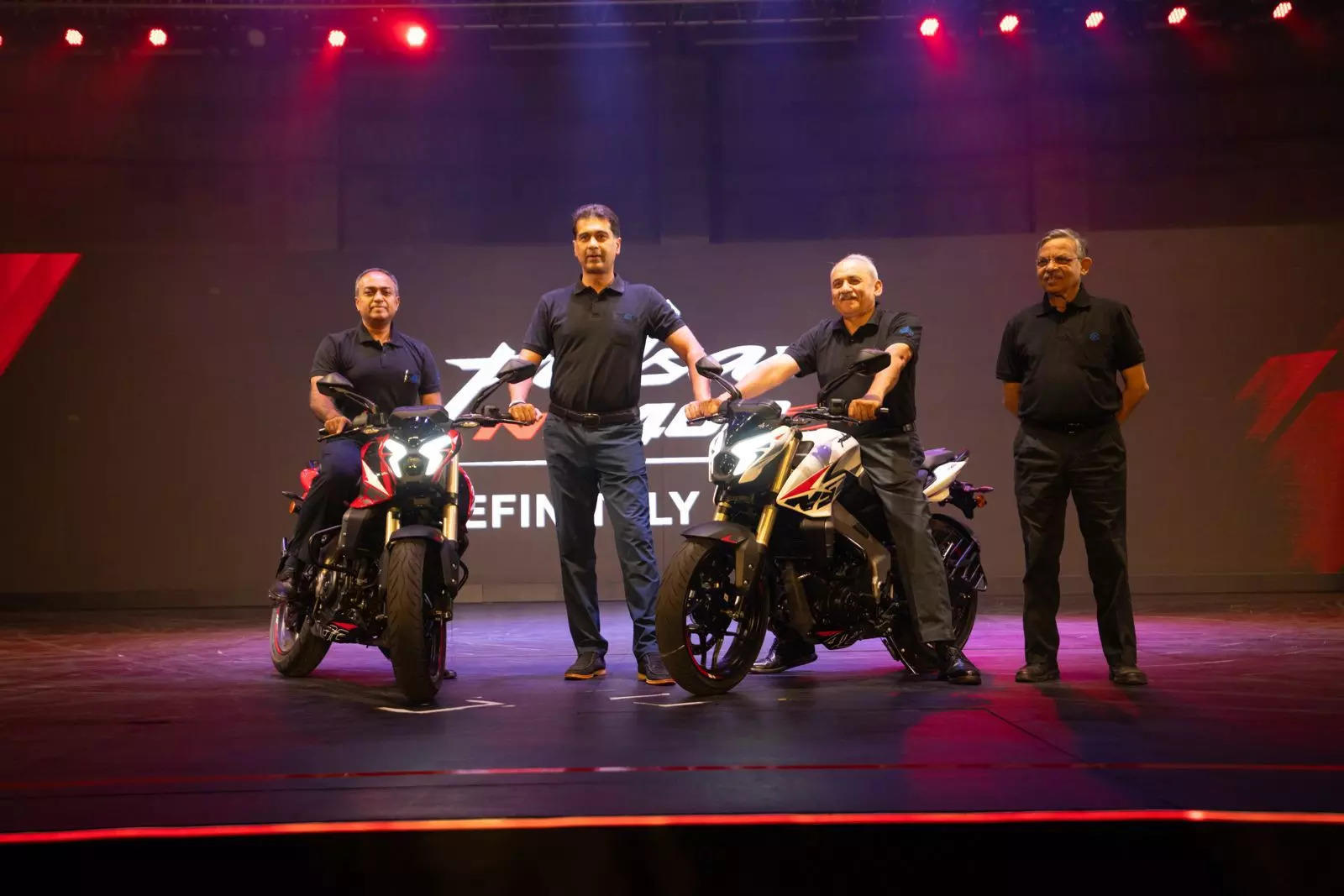
New Delhi: The launch of the Pulsar NS400Z earlier this month marks yet another milestone for this motorcycle brand which is now into its 23rd year and still going strong.
The latest offering is the most powerful bike under the Pulsar umbrella but from Bajaj Auto’s point of view, it is perhaps much more than that. The brand made its debut way back in November 2001 at a time when its manufacturer had slipped to the second place in the Indian two-wheeler market after ceding this spot to (the then) Hero Honda.
This was the period of the motorcycle boom and customers were moving away from the once crowded geared scooter space where Bajaj Auto was the undisputed monarch. Top Japanese brands like Honda, Suzuki and Yamaha entered the market in the 1980s and quickly forged equity alliances with local players for developing motorcycles. Bajaj, likewise, got into an alliance with Kawasaki but this was just technical support without any equity involved.
The Hero Honda partnership got the fancy of the market and its models raced ahead of TVS-Suzuki and Escorts-Yamaha. While geared scooters were rapidly being shown the door, a gearless revolution was happening in the form of Kinetic Honda, the joint venture of the Pune-based Kinetic group and Honda.
It was now amply clear that Bajaj Auto’s halcyon days as the two-wheeler market leader were coming to an end since it just could not keep pace with the Hero Honda juggernaut. It was also around this time that the Pulsar twins — 150cc and 180cc- were launched. The market response to these motorcycles was electrifying and was the best piece of news to Bajaj Auto. It had clearly made a massive impact in the sports segment and would now hold on to its leadership position here in the decades that followed.
Confidence booster
The ‘Definitely Male’ tagline for the Pulsar worked like a charm and the stage was now set for Bajaj to take the script to the next level. The success of the Pulsar was a huge confidence booster for the company that it was on the right track and could hold its own in a new arena like motorcycles. Hero Honda had taken away the market leader crown but Bajaj was now determined to remain a worthy competitor with a differentiator strategy.
There is no question, therefore, that the Pulsar was the pivot of the resurrected Bajaj Auto story in motorcycles and the brand remains top-of-recall after over two decades of its existence. Other examples like the ageless Honda City come to mind as other durable auto brands which continue to enjoy immense customer trust and loyalty for so long.
With the success of the Pulsar twins, Bajaj Auto was now poised to work on its differentiator strategy in motorcycles and take the bold decision of completely exiting scooters. To old timers steeped in nostalgia, this was a big blow since brands like Chetak were synonymous with the heart-tugging Hamara Bajaj but it was now crystal clear that the old order had to give way. There was now an all-new Hamara Bajaj jingle to keep in sync with the times.
Over the years, Pulsar has been through a host of avatars right from 125cc to the more recent 400cc offering. Bajaj was also of the view that aspirational Pulsar buyers could now buy a commuter bike in the form of the 125cc Discover launched in 2004. All this was part of the differentiator strategy to steer clear of Hero Honda’s 100-110cc motorcycle brands which dominated the commuter space.
Problem of plenty
The thinking behind the Discover was spot-on except that the company went overboard in its quest for volumes and brought in a host of versions in rapid succession. By the end of the day, nobody really knew what the Discover stood for which was a pity because the intent was right though the execution went horribly wrong. On the other hand, Pulsar stayed on course with its DNA of power, performance and styling at an affordable price.
The Bajaj Auto of today has, of course, come a long way since November 2001 when the launch of the Pulsar twins put it firmly on the track of growth as a specialist motorcycle maker. It now has strong allies in the form of KTM of Austria and Triumph of the UK. The company’s Chakan plot near Pune is a global manufacturing powerhouse for KTM’s Duke-branded motorcycles as well as the range from Swedish brand, Husqvarna, and now Triumph’s midsize bikes.
The Chetak scooter brand is back too, albeit in an electric avatar, and is being produced at the same Akurdi facility where it first rolled out in 1972. When Pulsar entered as a game changer in 2001, not many people would have thought that its manufacturer would end up being the largest exporter of two-wheelers from India. Bajaj Auto ships out 2.5 million units each year and this number will increase as both KTM and Triumph farm out more responsibilities to their Indian partner.
Pricing power
While dwelling on the Pulsar and its brand power, Rajiv Bajaj, Managing Director, had told this writer some years ago, “By the end of the day, the only measure of a good brand is its pricing power in the market. Brands are never built on a diffused strategy.”
According to him, those companies which have kept their brands sharper are the ones who are profitable. One of the big mistakes is to try and “make everything for everyone” and put the same brand across segments.
Bajaj added that brand also “does not mean high price but in the segment it can command the highest price, stay there and does not respond if somebody drops the price”. The Pulsar was, therefore, a brand, which was in sync with his thinking that “products sell but brands profit”.
Brands, he reiterated, had to be aligned to segments and products aligned to brands. He also did not agree with the theory of finding fortune at the bottom of the pyramid. “In my view, there is fortune everywhere except right at the bottom of the pyramid. I agree that the bottom is bigger than the top, which also explains why more people are naturally there. Yet, you have to stop somewhere,” said Bajaj.
Top draw
He was also categorical that ‘brand’ meant profit and the ability to price a product at a premium to competition is what mattered. This is where Pulsar remains an important part of the Bajaj Auto journey and the fact that it is still going strong only means that it remains a top draw as a brand. “The measure of a brand is profit but just because something is profitable does not make it a brand. The reverse is clearly not true,” Bajaj said.
In a more recent interview, whilst on the subject of brands, the MD said, Bajaj Auto has always been a value-for-money brand. There was a time when this was also the tagline of the company and “is a great place to be in” from the viewpoint of customer perception. Likewise, other automakers like Honda and Maruti could also be perceived as value-for-money brands.
“By stating so, I don’t mean cheap but truly value-for-money that is the foundation or the bedrock of our strength that is coming in from quality and scale. You don’t become value if you don’t give quality and you don’t become value-for-money if you don’t have the scale to be competitive,” said Bajaj.

















